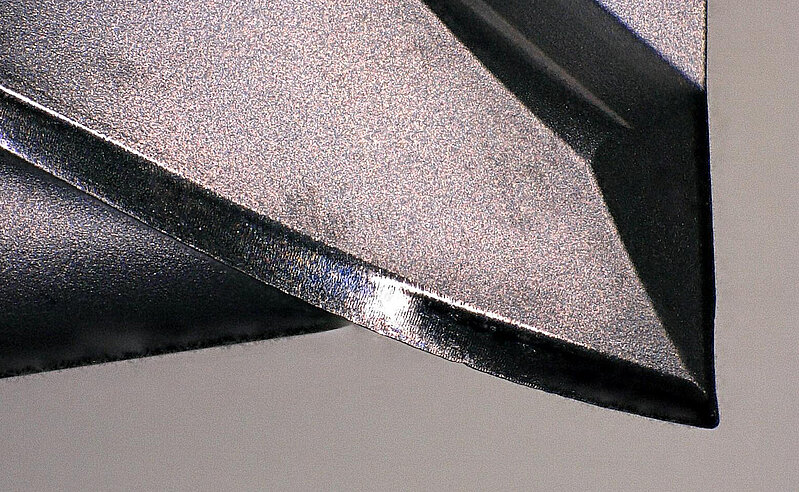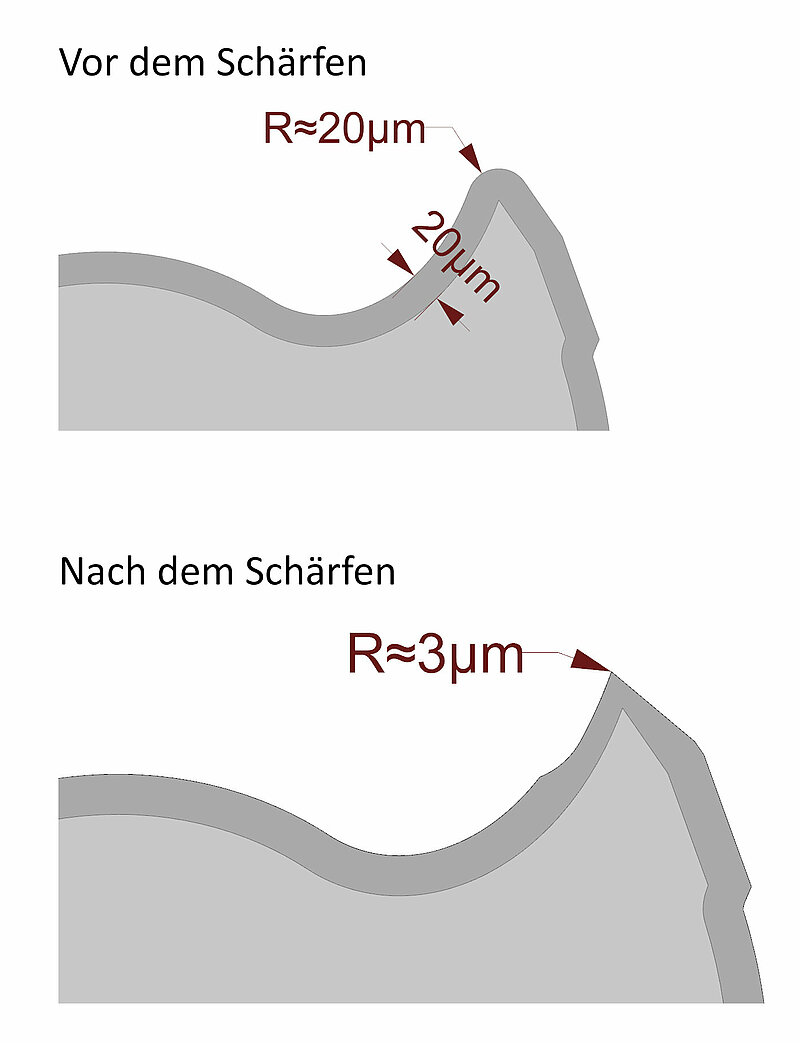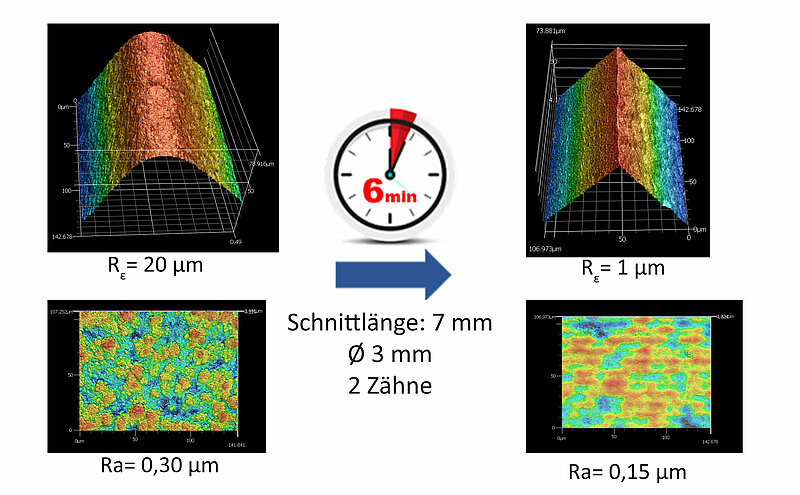LaserSmart 510: When diamond becomes as soft as butter...
SmartSharpening from Rollomatic yields sharply defined cutting edges
There’s no harder substance than diamond and, as a CVD layer or PCD tip, it has become a virtually irreplaceable cutting material in many industries. Its hardness has always limited the geometric design possibilities for tools – until now: the LaserSmart 510 and the new SmartSharpening process from Rollomatic make it easy to create sharp cutting edges even on diamond-coated carbide tools. The list of extremely abrasive materials is getting longer all the time – carbon-fiber-reinforced plastic, glass-fiber-reinforced plastic, graphite, composites, precious metals and nonferrous materials – and they all pose a real challenge for machinists. To make the required tools as durable as possible, extremely hard cutting materials such as PCD or CVD diamond are used. The challenge now for tool-grinders is to further enhance the abrasion protection already achieved and so extend the service life, but at the same time ensure very sharp cutting edges to enable precision-machining of tricky materials. Rollomatic – the grinding machine specialist from Le Landeron in Switzerland – is helping to make this a reality thanks to the LaserSmart 510 and a world first: the new SmartSharpening process.
Precision sharpness makes all the difference
For some tool types, CVD diamond layers offer the best protection. However, the coating is rounding off the cutting edges and makes the tool dull. In certain applications sharp cutting edges are absolutely vital. “But only if the sharpening can be done in a practical, simple, reliably and automated way”, says Sven Peter, Product Manager Laser at Rollomatic. And this is precisely where the LaserSmart 510 delivers: Rollomatic has developed a process allowing thick CVD coatings to be sharpened. The machine detects – to an accuracy within the µm range – the position of the coated cutting edge in order to determine its exact shape and position. “The laser then strips away just enough coating material to give the cutting edge the desired sharpness. This means that the tool is sharp, but has not lost any of its protective layer,” says Sven Peter. The fact that the sharpness of the cutting edges can also be corrected at a later stage in the process opens up whole new possibilities for manufacturers when designing their tools.
Time as a success factor
Production processes can never be performed fast enough, which is why users will love just how much time they can save with this new system. Compared to its predecessor the LaserSmart 501, the new LaserSmart 510 shortens machining times by as much as 450%. “Especially compared with conventional production methods, this is a major step forward. When eroding or grinding metal, machining speeds of perhaps 1 mm/min can be achieved, our laser works at over 5 mm/min! This literally makes the conventional methods look old,” says Sven Peter. Of course, with potential speeds like these, you don’t want to be let down by sluggish computing or programming times. This is why Rollomatic also employs the latest SmartMachining software, which allows sharp diamondtools to be designed extremely quickly and easily. “The program proposes, visualizes and monitors the optimum machining paths. This makes it easier even for less experienced users to do the programming, while at the same time allowing experienced users to make full use of the diverse range of features and functions available with our systems. And users of our first LaserSmart generation will also get to enjoy these benefits,” says Sven Peter.
Precision shaping of PCD
Another benefit of the LaserSmart 510 – in addition to the ability to sharpen cutting edges – is that you can perform highly efficient PCD machining. This means that Rollomatic customers always have access to precisely the right technology for their application and can simultaneously operate their machinery at full capacity – and all with the required flexibility. This makes the SmartSharpening process available with the LaserSmart 510 doubly attractive – both for manufacturers specializing exclusively in solid carbide tools and for companies that produce both carbide and PCD/CVD tools.
New technology with the tried-and-trusted “chassis”
During the design and development process, Rollomatic drew on its decades of experience in grinding machine production. And here’s why the LaserSmart 510 is such a highly sophisticated and reliable product: Five interpolating axes with linear and servomotors form the basis for manufacturing indexable inserts and shank tools made of ultra hard materials such as PCD, cBN, CVD, MKD or natural diamond. Four built-in cameras monitor and map all the machine’s processes on the control unit – from the robot to the measuring sensor. The tool measuring process in particular is much more efficient and user-friendly than ever before.
A smart solution for tough jobs
Tools with thick-film CVD layers are designed to deliver outstanding performance in the machining of abrasive materials. SmartSharpening from Rollomatic is a straightforward and, above all, quick process that enhances these tools by giving them extremely sharp cutting edges. Comparisons with conventional diamond tools show that tools with thick layers have a significantly longer service life. “And this makes them a cost-effective alternative to the often much more expensive PCD variants,” says Sven Peter.
Source | Rollomatic
![[Translate to English:] InDiamond.world](/fileadmin/_processed_/a/1/csm_InDiamond_Logo_2021_1fb017de30.png)


